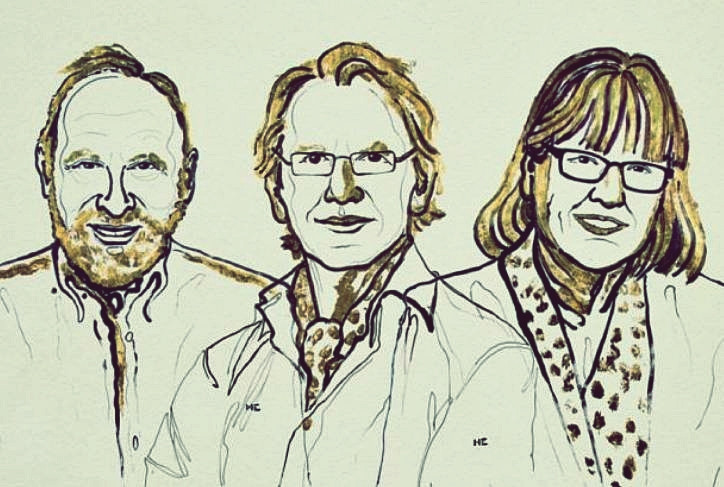Arthur Ashkin of Bell Laboratories in the United States; Gérard Mourou of École Polytechnique, Palaiseau in France and Donna Strickland, a physicist at the University of Waterloo in Canada, share the Nobel Prize in Physics 2018 for inventions in the field of laser physics widely considered groundbreaking.
The Royal Swedish Academy of Sciences conferred the Nobel on Ashkin for his invention of the optical tweezers and their application to biological systems. Mourou and Strickland received their Nobels for their joint work on generating high-intensity, ultra-short optical pulses using a technique they developed called "Chirped Pulse Amplification" or CPA.
Strickland is only the third woman over the past 55 years to have been conferred the Nobel Prize in Physics. For this honor, she joins Marie Curie and Maria Goeppert-Mayer. Curie shared the prize in 1903 with Henri Becquerel and her husband Pierre Curie for their work on radioactivity. Goeppert-Mayer shared the 1962 prize with E. Paul Wigner and Hans Jensen for her work on the shell structure of atomic nuclei.
In conferring the Nobels on the trio, the Academy noted the inventions being honored to have revolutionized laser physics. It pointed out that extremely small objects and incredibly rapid processes are now being seen in a new light. Advanced precision instruments are opening up unexplored areas of research and multitude of industrial and medical applications, and this because of the work of these three Laureates.
Ashkin invented the so-called "optical tweezers," which are tightly focused beams of light that can grab particles, atoms, and living cells that are now a common tool in biological laboratories around the world. Mourou and Strickland won the prize for figuring out how to stretch and amplify laser light to create incredibly short, intense bursts of laser pulses. The Academy cited the revolutionary nature of this combined work in "opening up unexplored areas of research and a multitude of industrial and medical applications."
Ashkin invented the optical tweezers that grab particles, atoms, viruses and other living cells with laser beam "fingers." This new tool allowed Ashkin to realize an eternal dream of science fiction - using the radiation pressure emitted by light (or photons, to be more precise) to move physical objects. The device most commonly associated with this phenomenon is the "tractor beam," which in sci-fi adventures such as Star Trek is capable of capturing and moving about large objects such as starships and asteroids.
After years of persevering work, Ashkin succeeded in getting laser light to push small particles towards the center of a laser beam and to hold them there. The result was the invention of the optical tweezers. A major breakthrough came in 1987 when Ashkin used his optical tweezers to capture living bacteria without harming them. As a consequence, optical tweezers are now widely used to investigate the machinery of life.
Mourou and Strickland paved the way towards the shortest and most intense laser pulses ever created by mankind -- the CPA. Using an ingenious approach, they succeeded in creating ultrashort high-intensity laser pulses without destroying the amplifying material, in itself an incredible feat.
To do this, they first stretched the laser pulses in time to reduce their peak power. They then amplified and finally compressed the laser pulses. More light is packed together in the same tiny space if a pulse of light is compressed over time. This pulse then becomes shorter and, as a result, the intensity of the pulse increases dramatically.
Their newly invented CPA technique soon became standard for subsequent high-intensity lasers. Its uses include the millions of corrective eye surgeries conducted every year using the sharpest of laser beams. The innumerable areas of application have not yet been completely explored, however.





